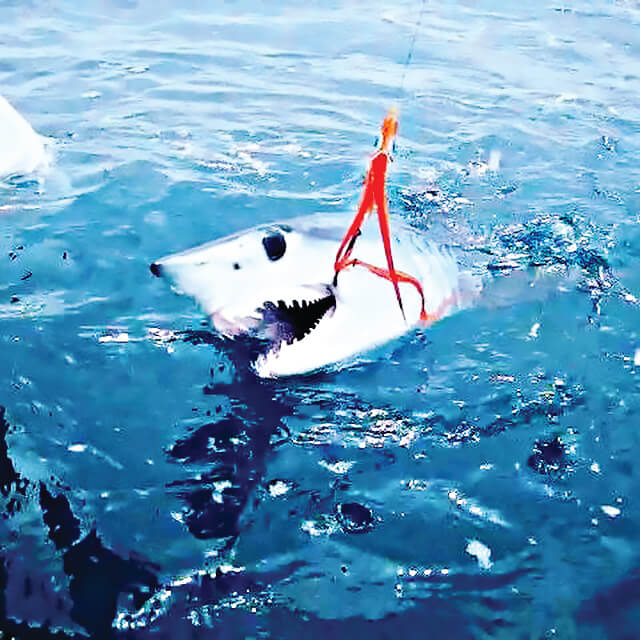If you’re looking for some spectacular fly fishing for toothy critters, mako sharks are tough to beat as a game fish. They can be found pretty much worldwide, but right now is the time of year to visit southern California, where shortfin Mako sharks show up off the coast every year within easy range for fly rodders with a small skiff.
The mako shark is one of saltwater fly fishing’s outstanding but unappreciated game fish. Found on both the Atlantic and Pacific coasts, a smaller Mako in the 20- to 30-pound range can be the perfect-sized fish for the beginning saltwater fly fisherman. Of course, fishing for sharks is a tad different than fishing for bluegills in your Uncle Ned’s farm pond, and the equipment also differs.
First, you’ll need a boat, preferably a boat over 18-feet that can handle fairly choppy seas. Most center-consoles will do; however, a skiff with a beam of 8 feet or wider and a not-too-deep V will settle in the water better and will reduce pitch and roll to a minimum, offering a much more stable casting platform.
A good chum line is the most effective way of attracting makos to within casting distance of your boat. Chumming attracts the larger makos and will place you in the position of being able to sight-cast to them.
Into a chum bag, place the belly sections or fresh carcasses of tuna, bluefish or bonito, then place the bag into a milk crate or 5-gallon bucket and lower this mess over the side. Then sit back and listen to the musical score from the movie “Jaws” to begin. You won’t have long to wait once that chum slick begins to spread. Ideally, you should use fresh carcasses, but store-bought chum will suffice. One bit of important advice: Less is more when chumming; you don’t need much; no matter how small the slick, a shark can smell it from miles away.
Now that you have the boat and chum, the next thing to do is find a mako. On the West Coast, we are fortunate to have the continental shelf only a few miles offshore. On the east coast, you’ll have to venture bit farther offshore. Keep your eyes peeled for working birds and surface-busting bait; constantly check the water temperature looking for readings between 66 and 70 degrees. But, be patient when chumming. I will wait at least an hour or an hour and a half before moving to another spot, but there have been occasions when the sharks make their appearance within a few minutes of 1 ½ hours.
Once in the slick, makos will stick around for most of the fishing day. Drifting allows you to cover more water and in the process, attract more makos to your boat.
By choosing the right season, having the right chum and chumming the right areas, you can count on hooking and releasing a good number of Makos during the course of a single day on the water.
